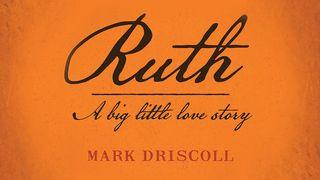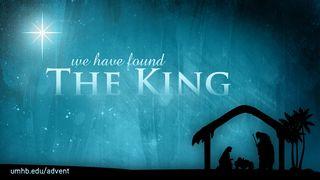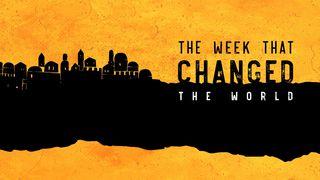The Boy Who Is Lord By Mark DriscollSample

Jesus and the temple
Jesus’ visit to the temple represented a new epoch in human history. When Jesus and the temple come together, we see the fulfillment of the Old Covenant and the inauguration of the New Covenant taking place. Let me explain to you some of the theological significance of the temple, and that moment when Jesus arrived.
1. The temple was the connecting place between heaven and earth.
The temple, particularly the Holy of Holies in the center of the temple, was the connection place between heaven and earth. God is in heaven as Creator, we are on earth as created, and God’s very presence dwelt in the temple, in the Holy of Holies, making it the most sacred place on earth.
2. The temple was the place of God’s presence.
In the Old Testament, if you wanted to be near God, you had to go to the temple.
3. The temple was where God’s people would come to meet with him.
If you wanted to meet with God during the temple era, you had to visit the temple. God didn’t need a house; he created the heavens and the earth. But he did establish a place where people could come and meet with him. And people came from long distances to visit Jerusalem and set eyes on the place containing God’s very presence.
4. The temple was the place where sin was atoned for.
All of the ritual purifications and sacrifices done in and around the temple were performed to symbolize the remission of sin. At the temple, before a holy and righteous God, people would acknowledge their guilt and sin.
One day every year, on Yom Kippur (Day of Atonement), the high priest was permitted to enter the Holy of Holies to make a sacrifice on behalf of the people. On that day, two goats would be brought, a substitute goat and a scapegoat. The priest would pray over the substitute goat, confess the sins of the people, and then slaughter the animal to atone for their sins. The priest would then pray over the scapegoat, confess the sins of the people, and then send it away to represent how God not only forgives sin but removes it completely.
5. The temple was the center of life and faith and worship.
God’s people were surrounded by enemies on every side who frequently threatened and attacked. The temple was a place where God’s people could unite and care for each other.
Four hundred years before Jesus’ birth, the prophet Malachi prophesied that the Messiah would come to the temple. When Mary holds Jesus tenderly in her arms, ascending the steps of the temple wearing white, she is fulfilling Malachi’s words. She is holding in her hands the fulfillment of the entire sacrificial system, the entire point of the Day of Atonement, the entire purpose of the nation of Israel, the consideration of the priests, and the existence of the temple itself.
The temple was destroyed in 70 A.D., just like Jesus said it would be (Matthew 26:61; Mark 14:58; John 2:19). The temple has been destroyed for almost 2,000 years. Why? We have no need of it any longer. It has served its purpose. For hundreds of years, the temple prepared people for the coming of Jesus. And then he came.
I have good news for you. We don’t need ritual baths anymore; Jesus cleanses our hearts through repentance and faith. “If we confess our sins, he is faithful and just to forgive us our sins and to cleanse us from all unrighteousness” (1 John 1:9).
We don’t need to go to the temple anymore. Where do we go to meet with God? Jesus. “For there is one God, and there is one mediator between God and men, the man Christ Jesus” (1 Tim. 2:5). Where is sin atoned for? Jesus. Where is the center of our life and our faith and our worship and our community? Jesus. No temple is required.
We do not have to bring a sacrifice to God any longer. Jesus has atoned for our sins. John the Baptizer said it well: “Behold, the Lamb of God, who takes away the sin of the world!” (John 1:29) Unlike the Day of Atonement, which took place year after year, Jesus’ sacrifice was once and for all. “For by a single offering he has perfected for all time those who are being sanctified” (Hebrews 10:14).
There’s no longer any high priest, because we don’t need one. The high priest was the intercessor and the advocate for the people. He would go between the people and God. He would bring the people’s sin to God and he would mediate and intercede. And the priesthood came to an end with Jesus. Why? Because he’s our great high priest (Hebrews 4:15) who alone is our mediator between us and God.
If you have Jesus, you have everything that everyone in the Old Covenant longed for, hoped for, and prayed for!
Spend a few minutes reflecting on the changes that resulted when Jesus replaced the temple and all of its rites. Take some time to enjoy the unrestricted access we have to the presence of God, and thank him for this great gift.
Scripture
About this Plan

Every Christmas the entire world stops to celebrate the birth of the most important person in the history of the world - Jesus Christ! In "The Boy Who Is Lord" daily devotional, we will study the great details surrounding this life-changing, history-altering, and soul-saving entrance of God into human history as recorded in Luke 1-2.
More
We would like to thank Pastor Mark Driscoll for providing this plan. For more information, please visit: http://realfaith.com
Related Plans

Prepare Him Room

Ruth: A Big Little Love Story by Mark Driscoll

Advent - We Have Found The King

Belmont University Advent Guide

The Week That Changed The World

The Magic Of Christmas

Our Daily Bread Christmas: Gift Of Grace

Giving It All Away…And Getting It All Back Again

Come And Behold Him: Advent Devotions
